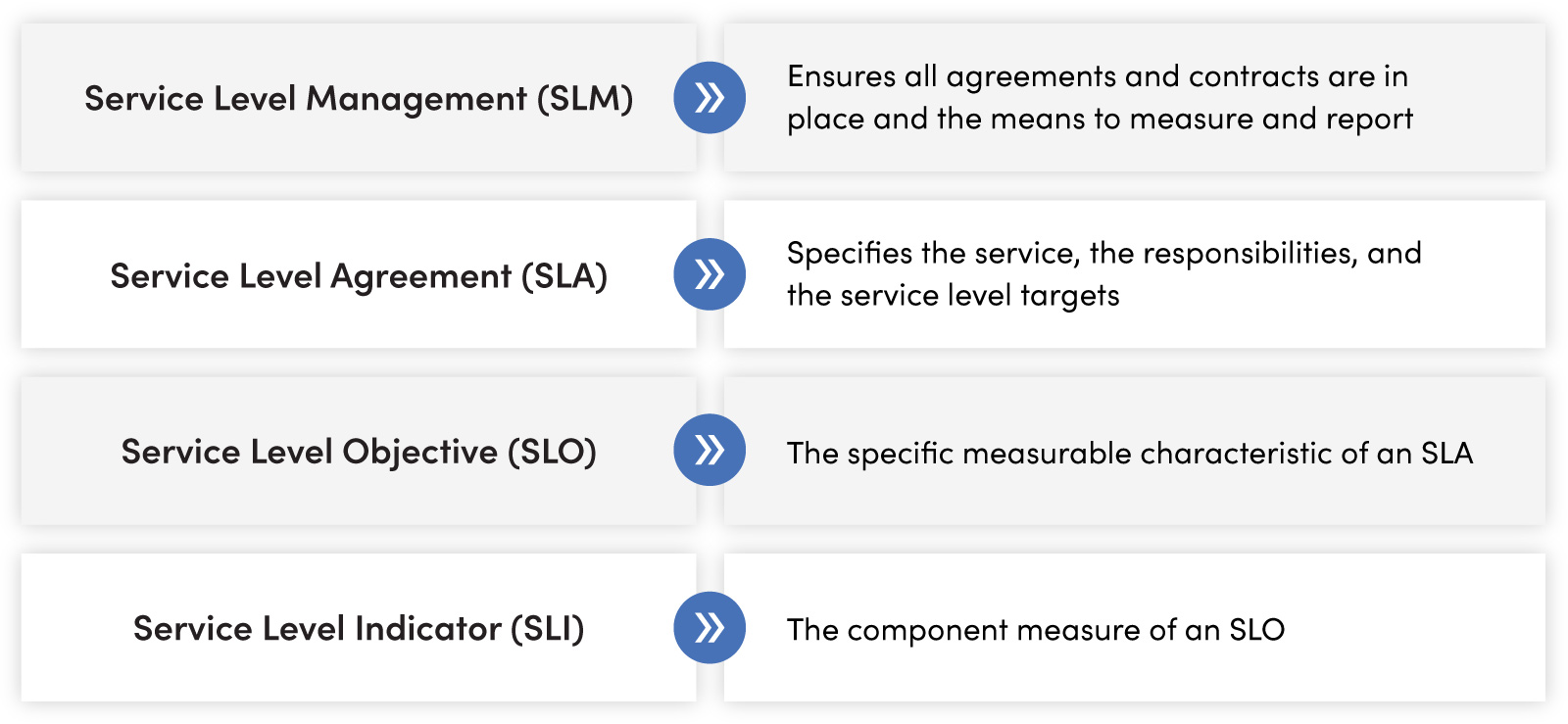4Implementing Service Level Management
.png?width=1273&name=imageonline-co-roundcorner%20(4).png)
Implementing SLM involves a series of steps that require careful planning, execution, and monitoring.
Here’s a high-level look at how implementation works step-by-step.
1. Identify and gather service requirements
The first step in implementing SLM is to identify the service requirements of the business units or customers. This involves engaging with stakeholders to understand their needs and expectations, the business outcomes they want to achieve, and the IT services required to support these outcomes. This understanding forms the basis for defining and designing the IT services.
2. Establish IT services
Once the service requirements are identified, the next step is to define and document which specific IT services will be provided to meet those requirements. This involves outlining the scope, features, quality, and performance standards of each service.
3. Establish service levels
Service levels define the expected performance of an IT service. These targets should be aligned with the business requirements identified in the first step and should be measurable, achievable, relevant, and time-bound.
4. Develop SLAs and SLOs
Again, an SLA is the contractual agreement between service providers and clients outlining the level and quality of services that will be provided. An SLO is an agreement between service providers and clients outlining the level and quality of services provided. These aren’t contractually binding and don’t include penalties. SLOs tend to be the component parts of SLAs.
5. Monitor and report on service performance
Once the SLAs and SLOs are in place and service is live, the next step is to continuously monitor the performance of the IT services against the agreed-upon service levels. This involves tracking KPIs, preparing service level reports, and providing these reports to the relevant stakeholders, ideally through regular reporting sessions—not just “as needed.”
Here at INOC for example, our reporting criteria are exhaustive—painting a complete picture of service delivery across all its dimensions:
- Review tickets, incidents, and escalations
- Review chronic alarms and incidents
- Coordinate maintenance calendar
- Report on service and operations metrics
- Contractor assessments of performance
- Forecast planned activities
- Review quantity and causes for NOC support activities
- Identify root causes and preventive actions
- Review client escalations and open items
- Review staffing and proficiency levels
- Validate assumptions for contract
- Identify and mitigate risks within infrastructure and operations
- Review previous action items and status
6. Manage relationships with all stakeholders
Successful SLM also involves managing relationships with customers and stakeholders. This includes managing customer expectations, communicating effectively about service performance, and ensuring customer satisfaction.
Here at INOC, QA/QC is a dedicated function of our NOC services. Our quality control measures keep most concerns off everyone’s radar entirely. We pull large samples of both specific and random tickets to understand how they were created, worked, and closed to learn from successes, identify opportunities for improvement, and understand any potential impact on service.
We also evaluate team-to-client interactions to ensure each communication is professional, efficient, and actionable for both parties. Our dedicated quality team evaluates adherence to procedures, quality of work delivered, response times for notifications and escalations, and a variety of other criteria that factor into service. Each lesson, large and small, is applied to continuously improve our workforce, our platform, and our processes so we can pass the value onto our customers.
7. Run a Continuous Improvement Plan
While SLM never ends, the final ongoing component in implementation is the continuous improvement plan. This involves identifying opportunities for improving the IT services and the SLM process, implementing improvement actions, and monitoring the results to ensure that the improvements are effective.
IT environments are anything but static. We work with all of our customers to identify changing business needs and do everything we can to ensure satisfaction. That includes ongoing QC/QA analysis and reporting as well as in-depth quarterly business reviews to look back and forward.

.png?width=1273&name=imageonline-co-roundcorner%20(1).png)


.png?width=1273&name=imageonline-co-roundcorner%20(2).png)
.png?width=1273&name=imageonline-co-roundcorner%20(4).png)
.png?width=1273&name=imageonline-co-roundcorner%20(5).png)